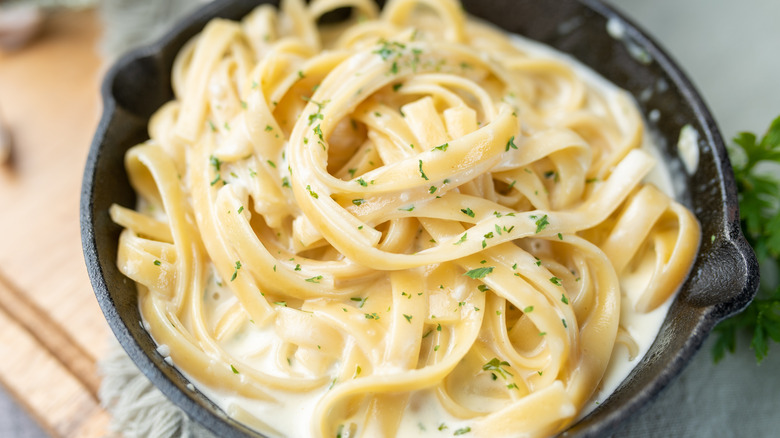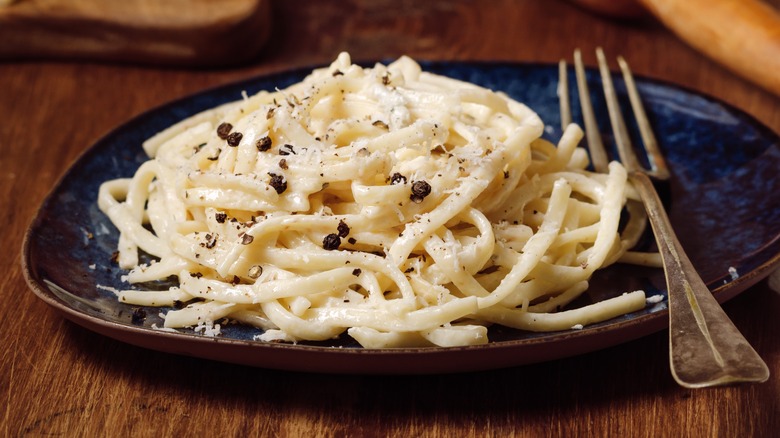Why You Should Skip The Pasta With Alfredo Sauce At Restaurants
Fettuccine Alfredo is one of the most popular and well-known pasta dishes out there and will show up on the menu at Italian restaurants quite often. It is a pasta dish that plenty of people make at home, seeing as it's a pretty simple recipe and isn't as overwhelming as some other pasta or Italian dishes may seem. If you want to make Alfredo sauce from scratch, it's simply a blend of Parmesan cheese, heavy cream, butter, and seasoning.
The simplicity of Alfredo pasta is actually a key reason as to why you probably shouldn't order this dish at a restaurant. Even a chef agrees — Raffaele Dall'Erta, the executive chef of Hamptons Restaurant in South Carolina, told Insider, "Pasta Alfredo is a very lazy pasta dish. Anyone can make this meal at home and it will probably taste better than what you'd get in a restaurant." So with that in mind, which cheese-based or cream-based pasta dishes are worth your time at a restaurant?
Try cacio e pepe or lasagna next time you're at an Italian restaurant
One of the most popular cheese-based pasta dishes is cacio e pepe, which literally translates to "cheese and pepper" — so it's safe to say that cheese is the star of this show. It is traditionally made with Pecorino Romano and served with spaghetti. The freshness and quality of the cheese and the black pepper are important, as that is where the flavor comes from. It's the perfect dish to order in the type of restaurant that uses the best ingredients available. Naturally, as it's such a popular dish, it appears on the menu of many Italian restaurants. Importantly, the creamy texture can level up against that of fettuccine Alfredo, if the creaminess is what you like most about Alfredo. However, the recipe doesn't actually contain cream, so this flavor and texture comes from the butter and cheese, and the special technique used to emulsify the ingredients with pasta water.
If you're more interested in the cheesy flavor of Alfredo, then a lasagna may be a good bet for ordering in a restaurant. It's typically made with a cheesy béchemal sauce that coats every layer. Many lasagnas also include multiple cheeses, such as ricotta, Parmesan, or mozzarella. Lasagna is very customizable — it can be meat-based or vegetarian, full of cheese or light on the cheese. However, it takes a lot of time and effort to make, with many pots and pans to wash up, making it a good choice when dining out.

